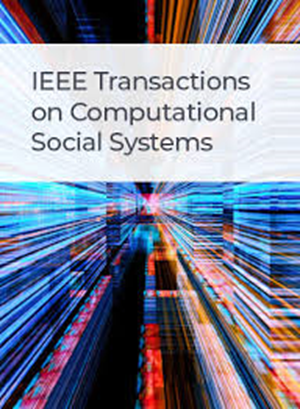Generative Steganography via Live Comments on Streaming Video Frames
IF 4.5
2区 计算机科学
Q1 COMPUTER SCIENCE, CYBERNETICS
IEEE Transactions on Computational Social Systems
Pub Date : 2024-03-12
DOI:10.1109/TCSS.2024.3352979
引用次数: 0
Abstract
Generative text steganography has received considerable attention in the covert communication community for the benefit of sending secret messages without the need to modify carriers. Existing methods typically choose the next word when generating a stego-text based on conditional probability encoding of candidates, which may lead to generating inadequate words for the underlying secret message. How to generate a semantically controllable stego-text with a high capacity on secure embedding of a secret message is a main challenge. We address this challenge by proposing a new paradigm to generative text steganography that takes advantage of certain social media through apparently normal behaviors from the sender. In particular, we make use of the live commenting feature provided by public video sharing platforms (PVSPs), which allow viewers to make comments on video scenes that will fly on screens when the scenes are shown. We show that this feature can be used to construct a generative steganographic system. The sender generates at random a number of distracting words and a certain invertible matrix called W-通过对流媒体视频帧的实时评论生成隐写术
生成式文本隐写术无需修改载体即可发送秘密信息,因此在隐蔽通信领域受到广泛关注。现有方法在生成隐写文本时,通常根据候选词的条件概率编码来选择下一个词,这可能会导致生成的词不适合底层密文。如何在安全嵌入密文的基础上生成高容量、语义可控的隐去文本是一个主要挑战。为了应对这一挑战,我们提出了一种新的生成文本隐写术范式,即通过发送者表面上的正常行为来利用某些社交媒体。特别是,我们利用了公共视频共享平台(PVSP)提供的实时评论功能,该功能允许观众对视频场景发表评论,这些评论会在场景播放时出现在屏幕上。我们证明,这一功能可用于构建生成式隐写系统。发送者根据信息字词和干扰字词的总数随机生成一定数量的干扰字词和称为 W-$d$ 矩阵的可逆矩阵。然后,发送方将这些词的索引序列转换为序列,选择一个或多个总帧数足够多的视频,并为序列中的每个帧生成注释。接收方提取注释帧索引,使用共享的隐密密钥生成与发送方相同的 W-$d$ 矩阵,并利用矩阵的逆变换获取密文。隐密密钥由词汇生成器和基于伪随机生成数字的 W-$d$ 矩阵生成器 (WMG) 组成。为了生成符合观众评论的帧评论,我们设计了一个 ResNet-LSTM 神经模型,根据输入图像的内容生成评论。理论分析表明,评论视频帧(CVF)具有隐蔽性、安全性、高效性和可行性,可以隐藏任意长度的信息。我们实现了 CVF,并从多个方面给出了评估结果,证明我们的工作优于现有的偷窃方法。
本文章由计算机程序翻译,如有差异,请以英文原文为准。
求助全文
约1分钟内获得全文
求助全文
来源期刊

IEEE Transactions on Computational Social Systems
Social Sciences-Social Sciences (miscellaneous)
CiteScore
10.00
自引率
20.00%
发文量
316
期刊介绍:
IEEE Transactions on Computational Social Systems focuses on such topics as modeling, simulation, analysis and understanding of social systems from the quantitative and/or computational perspective. "Systems" include man-man, man-machine and machine-machine organizations and adversarial situations as well as social media structures and their dynamics. More specifically, the proposed transactions publishes articles on modeling the dynamics of social systems, methodologies for incorporating and representing socio-cultural and behavioral aspects in computational modeling, analysis of social system behavior and structure, and paradigms for social systems modeling and simulation. The journal also features articles on social network dynamics, social intelligence and cognition, social systems design and architectures, socio-cultural modeling and representation, and computational behavior modeling, and their applications.
文献相关原料
| 公司名称 | 产品信息 | 采购帮参考价格 |
|---|
 求助内容:
求助内容: 应助结果提醒方式:
应助结果提醒方式:


